It was my pleasure and privilege to be a speaker and participant PR Newswire's first Virtual Conference and Expo called Engage CSR 2010: The Growth of Corporate Social Responsibility in a Socially Connected World on June 30, 2010. The even had a fantastic agenda and speaker line-up. Brainchild of the brilliant effervescent and ever-positive super-connector Susan McPherson, this event surpassed everyone's expectations and raised the bar in virtual conferencing, bringing CSR closer to so many people around the world (over 1,000 registrants) in an efficient, environmentally-positive, easily accessible format. Engage CSR was truly engaging! The event is archived at http://bit.ly/cI3r2y for 90 days those who want to hear the presentations again.
I participated in the panel called the Who, What, Why and How of Sustainability Reporting, moderated by John Viglotti of PRNewswire, and featuring co-presenters Mike Wallace, Director of the Sustainability Reporting Framework at the GRI, Michael Muyot, Founder and President of CRD Analytics, Maggie Kohn , CSR Director at Merck and Kevin Moss, CSR Director at BT. Mike and Michael talked about the importance of ESG information and the way investors now have greater access than ever before to non-financial data, and how this is used in evaluating companies.I then introduced the broader approach to Sustainability Reporting and how companies can go about it. Maggie and Kevin gave rivetting presentations about how reporting happens in their companies, the benefits and the challenges.
For those who were not able to attend the event (make sure you don't miss the NEXT one!) , here is my presentation.
My key points were as follows (there is only so much you can say in 5 minutes!) :
Reporting is more than just a report. It's not just a compilation of facts and figures. It is designed not only to assist investors in how to evaluate the company's financial sustainability, it should tell the story of what a company does beyond making money. It has real value because many stakeholders, other than investors and the financial community, can view the report, and it influences them in making decisions about whether to buy from a company, whether to join a company, whether to support a company in the community and more. Not least, reporting is a tool for employees of the business to help them in their communications with everyone they interface with. Reports improve levels of trust in the business...if they are done well. Data from surveys proves this.Three elements of reporting well are Concept, Content and Communication.
Reporters should first and foremost consider their report concept. Reports should tell a story – they should reflect the message of the company's sustainability purpose – the way the company is contributing to a better quality of life and environment though its business activities and sustainability program. Every company has its unique way of doing this. Each company should think about this key concept and reflect this in the way they write the report. It's not just about listing information and data. It's about pulling all the data together that supports the company's story. Vodafone's last report was called Mobilising Development . Their contribution is to advancing the quality of life in developed countries in through mobile technology. H&M's last report is called Style and Substance reflecting the fact that their contribution in the world of fashion is underpinned by a strong basis of sustainability performance. Campbell's last report takes the theme of nourishment – nourishing the planet, the community etc – building on their core business which is not just about making a profit on selling soup, but about contributing to the nourishment in people's lives. These are strong PR themes, and must be aligned with the core concepts and strategy of sustainability in the business.
The content of a report should be the result of a broad team effort, which includes dialogue with external and internal stakeholders. It's no good if just the CSR manager or just a Communications Specialist writes the report. A wide range of internal departments must contribute to the content, and this content must be put in the CONTEXT of what external stakeholders expect. It should be structured in a way which both tells the story but also enables reporting against specific performance indicators, such as those defined by the GRI framework. The idea is not to run through a checklist of data items, but to embed the data in the way the story is told, providing a balanced perspective. It should not be just good news - the report should cover things that are challenging for the company. This has actually MORE positive value than just good news and ultimately is more credible. The content of the report should also be focused on the most important things for the business and for stakeholders. We call this materiality. The best reports include a MATERIALITY MATRIX which is evidence of structured thinking about the important issues. Ford, Centrica, General Electric, Vodafone, Dell, Sap, Allianz, … many of the best reporters include this and build their report around the key subjects noted as material. This avoids a report becoming what I call a shopping list and containing so much information that no-one can track or digest it, and becoming too unwieldy to manage.
My view is that the report is a platform for communication. It's one document which contains all the material sustainability performance information about the company. No one single stakeholder or stakeholder group will be interested in everything. Each stakeholder group has a different standpoint and need for information and interest. The report should be a common demoninator of information needs, and communications with different stakeholder groups should build on this. For example, many companies produce an internal summary report for employees, or use podcasts, webinars, intranet, discussions etc to get them involved. Coca Cola Enterprises held anAction Week communicating CSR to their employees. Some companies produce exec summaries for investor meetings, or for customers, or for supplier conferences. The report should be the single comprehensive referential basis for all other communications. The other thing about the report is the format – a PDF download, an interactive website, a video announcing key highlights (which I recently produced for Coca Cola enterprises), a buzz on social media. Whatever format(s) you choose, you should leverage it in a targeted way. Communication should be two-way. You should invite and encourage feedback. The recent report from SAP has a feedback option on every page. AEP has videos and webcasts, Intel and Verizon and many more have blogs relating to their reports, all of which encourage open dialogue. The design of the report should also reflect the concept, but not overface the reader.
In conclusion, a good report will have massive business and PR value, if it is written with a clear concept, relevant content and a sound basis for clear communication. This is no easy task and only very few reporters do it well. Look at some of my report reviews on CorporateRegister.com or Ethical Corporation to check out a range of different reports. Our role as stakeholders is to engage with companies to help them perform better and report better on sustainability.
And engaging brings us back full circle to the CSR Expo Engage CSR 2010. There were many other fascinating presentations and conversations and many new contacts and twitter follow-backs. Well done to all who organized, all the tech team for great support, and to everyone who joined in the fun.
elaine cohen is a CSR consultant, Sustainability reporter, Ice cream addict and co-CEO of Beyond Business, a leading social and environmental consulting and reporting firm. Visit our website at www.b-yond.biz/en



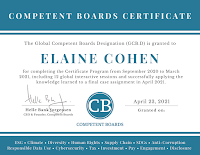


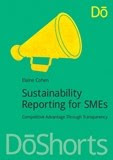
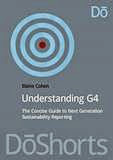
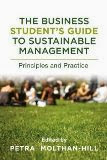
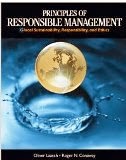
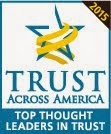









No comments:
Post a Comment